Does Video Help SEO? Key Benefits Every Marketer Should Know
Video is the most popular content format, familiar to everyone. However, not everyone understands the importance of video for search engine visibility and the numerous benefits it provides for those who want to stand out in the market.

How does video help SEO? This will be the central question that we’ll answer extensively and with examples throughout this post. While reading, you’ll also learn about some of the best practices for embedding video content on your website or page.
Contents
Video and SEO: What Search Engines Actually Value
We’re all used to thinking of search engines as keyword-hungry monsters that watch for the right keywords and phrases by sending their bots to inspect every single page online.
Well, partially, that is true, search engines still look for keywords that best match user queries. However, that’s only a tiny fraction of what the modern search engines like Google do today to evaluate and rank online resources.
What search engines actually value is whether a page helps users complete tasks. Video has importance because it can demonstrate steps, outcomes, or comparisons with less cognitive load — when the topic warrants it.
So, does video help SEO? Of course, it does, provided the asset supports the page’s main idea and the wider content. Search looks for a relevant, interpretable, and indexable video that contributes to the query, not a generic clip.
Conceptually, engines value these aspects of a video:
- Tight alignment with the page’s intent.
- Relevance to the user’s query.
- Trustworthy, descriptive metadata.
- Structured context that the crawler can parse.
- Valid thumbnail and accessible media.
- Indicators of satisfied viewing.
Google’s guidance notes that it must retrieve video bytes to power previews and key moments, and that structured data helps search understand what the video is and when to show richer results. These aren’t “tricks” — they are the language search uses to interpret multimedia content.
When a video clarifies, search is more likely to surface it. That clarity is the root of the video’s importance in today’s results.
The Key Benefits of Using Video for SEO
Let’s review what makes video such an attractive factor for SEO, and why you should focus on video in your optimization campaigns.
Improved Engagement Signals
Video is addictive, it’s captivating, and can keep you focused for many hours. Some like to scroll YouTube shorts, while others watch longer video formats like movies.
Search engines, on the other hand, don’t care about addiction, morality, or any other human values or indulgences; they follow what matters to humans. If it’s a video as the most powerful attention grabber, they respect and adopt the same value set.
A video clip, a product preview, an unpacking video, or an educational movie — these send strong engagement signals to search engines.
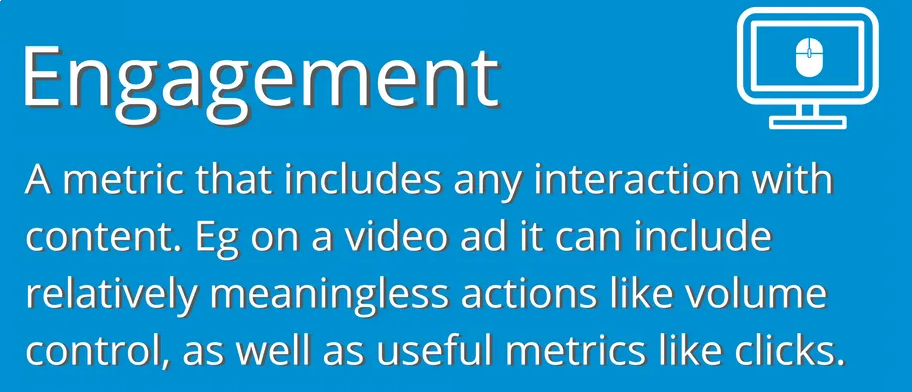
Source: Theonlineadvertisingguide
Engagement, however, is just the start. When people feel something is clearly explained, they’re more likely to share or link to it. That external attention helps your page earn authority, which is another important way video supports visibility.
Search features can amplify this further. A well-identified video can appear with a preview, timestamp highlights, or a key-moments panel. These elements don’t “force” ranking, but they can boost how often the right searchers notice and click.
All of this rests on a simple truth: video often makes complex ideas easier to grasp. That clarity keeps visitors around long enough to explore more.
Here is why these signals matter:
- Higher click-through opportunities (video format is a natural conversion magnet).
- Natural mentions and links (as video content is engaging and people will willingly share and comment).
- Clearer explanations at speed, as it’s better to see something once than to read several times.
- More pathways to related pages (video provides additional opportunities for internal-linking, which, in turn, can improve your resource’s authority and ranking power).
In a nutshell, you are much better off with video content on your page than without it. The benefits can be seen in your search rankings, which translates into higher traffic and better conversions.
Higher Visibility in Search Results
What’s the ultimate goal of SEO, or the Holy Grail that everyone who is optimizing their content for search engines is looking to find? It’s the search engine visibility. A succinct word that, on the one hand, implies colossal work on behalf of the marketer of making their page stand out, and, on the other hand, the appreciation of that effort by search engines by ranking the page high in SERPs (Search Engine Results Pages).
Videos can deliver just that. Provided they are properly placed, formatted, and optimized in other ways for search engine visibility.
What drives higher visibility of video assets? Let’s explore the three key visibility drivers:
- Video Thumbnails — thumbnails are miniature images displayed in search results near your main video or page. It works like a front page or a business card — it’s the first thing users notice. When thumbnails are clear and engaging, they naturally raise click-through rates, giving your page stronger visibility in crowded SERPs.
- Rich Snippets and Key Moments — Rich Snippets are the “enhanced” search results you often see with a thumbnail or short description under a link. For videos, they can even highlight specific timestamps — called key moments — that answer part of a question. These extra details make your result stand out and give people more reasons to click.
- Video Carousels on Google. Video carousels are the scrollable boxes of clips that Google shows for certain searches. They stand out far more than plain text results, giving your video a strong shot at being discovered and clicked.
A friendly warning: don’t overstuff your pages with videos. Even though they are powerful visibility drivers, too much is rarely a good thing, video and SEO being no exception. Allow for a proper variety of text, graphics, and videos, as modern search engines value variability and contrasting formats.
Stronger Backlinks & Shares
If videos send stronger engagement signals and improve visibility, they must also attract backlinks and shares, right? Indeed, they do. Let’s find out together how.
Shareable and Link-Worthy Content
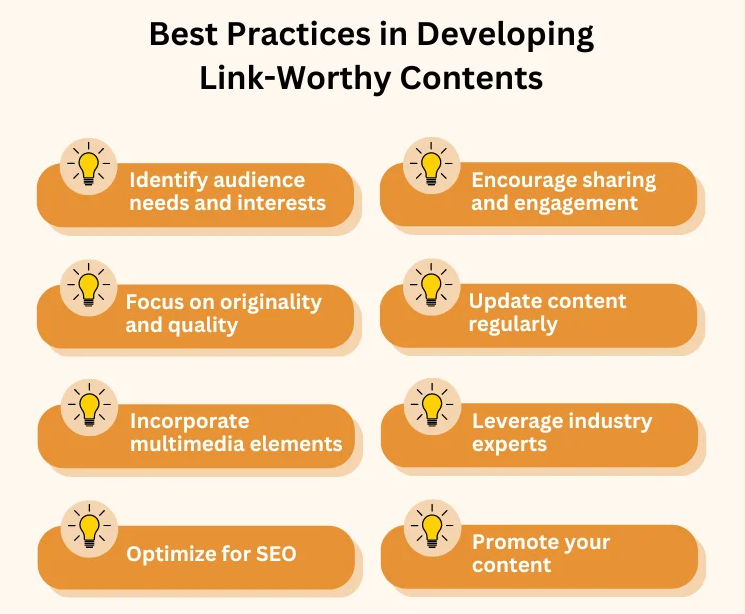
Source: Influno
People’s behaviors only are highly reminiscent of those offline. When they find something worthy, something interesting and unique, they instantaneously want to own it. In fact, they do, and here immediately comes a sense of pride of owning something valuable. Next comes the desire to brag and share what they have with others.
This exact psychological mechanism works for online content, and particularly videos. Product demos, tutorials, educational clips and simply interesting and insightful content leads to a desire to brag in front of family, friends, colleagues, or just strangers.
In a nutshell, that’s how and why people link to your video content and share it across their contacts, either on social media, or privately via messengers, or emails.
Original Visual Assets Attract Mentions
What happens next is that whoever links to your videos starts to cite them as sources. More and more people suddenly want to mention your great content. This attracts all sorts of backlinks, including dofollow and nofollow, making up for a healthy backlink profile, the same way infographics or charts do.
Authority Through Trust Signals
It’s hard to overestimate the importance of the above mechanism of linking to your content and sharing it. Basically, it creates authority for your page, website, or online shop. It builds credibility, not only in the eyes of people, but also in the eyes of search engines. Other creators may prefer linking to content that looks authoritative, strengthening your backlink profile.
YouTube Links Funnel Traffic and Mentions
With credibility and authority come organic traffic and mentions. The word “organic” means that it comes naturally, from higher visibility in search engines and better ranking. Compared to paid ads, which are “artificial” traffic boosters that cost real money.
Your video content cited on other authoritative resources (e.g., blogs, forums, or industry sites) often inspires follow-up coverage, which can generate more dofollow backlinks pointing back to your website.
Expanded Keyword Opportunities
Videos aren’t normally associated with keywords and written content. That’s a big fallacy, and an untapped opportunity for marketers and SEO specialists. Here, we explore the additional keyword opportunities that video content provides.
Transcripts and Captions Add Indexable Text
Some creators add transcripts and captions to their video content, while others don’t. The first ones get many more wins than might seem. Not only do users benefit from the possibility to check, for example, a poorly pronounced word, or translate a certain hard-to-distinguish phrase, but it also helps search engines to discover your content.
Indeed, transcripts and captions make your videos discoverable for search bots (crawlers). It aids search engines’ understanding of the meaning and content of your video assets.
Additionally, it provides opportunities for you to add high-intent keywords, and search engines can easily index and rank them.
It’s a win-win situation. You get the enhanced visibility and higher ranking, and other users get to discover and enjoy your content through search engines.
Metadata Targets More Queries
Video titles, descriptions, and tags allow you to include related keywords that might not fit naturally into the main article (transcript or caption).
For example, you can include your main or secondary keyword in the meta title or meta description of your video, or reflect a high-ranking natural language query. This further boosts your SEO gains, and in a highly competitive online market, any even small addition to search visibility can translate into massive advantages.
Key Moments Capture Intent Variations
Google’s “key moments” feature highlights specific parts of a video tied to different queries. It’s like repurposing your blog into a case study, or a long article into a short story.
With video content, it means a single asset can rank for multiple search intents — like “how to install,” “troubleshooting,” or “best settings” — all from a single asset.
Similarly, famous YouTubers often cut their most successful episodes into smaller pieces and disseminate them across social media channels, or place them into the YouTube shorts.
Amazing, how many more SEO gains can be harvested just by repurposing content and making it better fit into various intents and purposes.
Voice and Conversational Queries
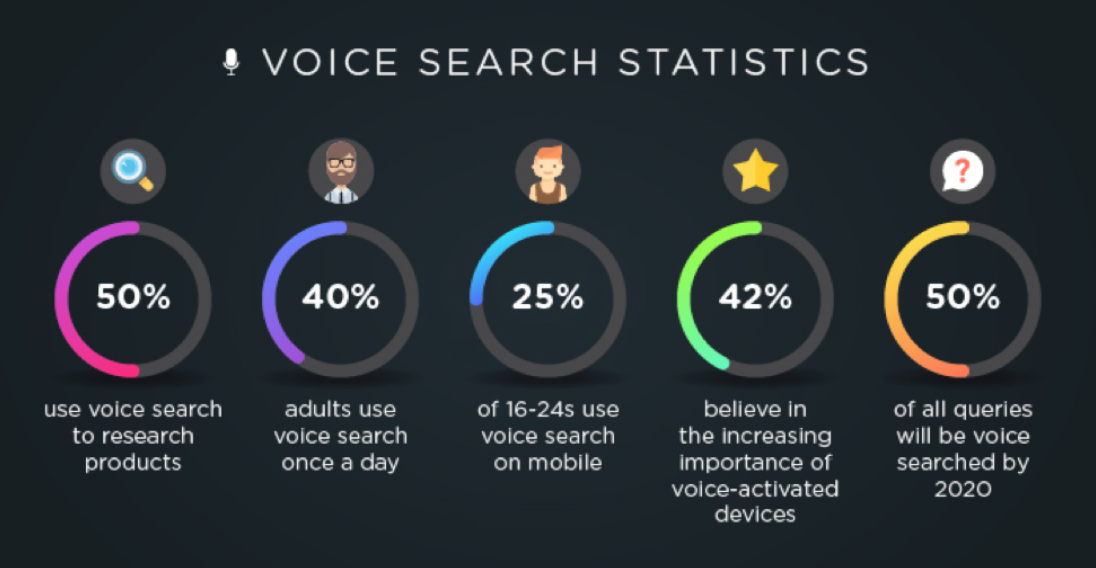
Source: Searchabledesign
Because videos often use natural, spoken language, transcripts can align with how people phrase voice searches. And most searches these days happen via voice queries, as we all know.
Moreover, the future of search is likely voice only and potentially, when the tech is there with thought-scanning/reading devices, the same natural language queries will be processed without anyone speaking a word.
Currently, this helps your content surface for queries that differ from traditional keyword-based searches.
Better User Experience
Videos capture attention like no text or image can. If that video content is really relevant and helpful, that becomes a big driving force behind a better user experience.
Relevant, helpful and convenient videos are good for user experience, often leading to enhanced engagement, better loyalty and even advocacy.
How does it all work? It happens because visitors often choose the easiest route to answers. And videos give them just that! They create that route by presenting information in a straightforward, visual way, which is easy to comprehend, and remember. Less energy spent (and human brains are very energy efficient machines) means higher satisfaction.
As convenience rises, so does engagement and loyalty. Users feel supported and are more likely to trust your site as a go-to source.
Furthermore, they are more willing to vouch for your brand, products or services when they communicate with their friends, colleagues and family, especially when your brands’ reputation is at stake.
Remember, what we said about the sense of ownership over a worthy item? The same attachment and advocacy arises for users in connection to your video content.
Here are the main reasons why videos enhance user experience:
- Make it easier to understand and doesn’t require as much energy as other content formats.
- Improve trust in the content, as often it’s better to see something once, than to hear it somewhere online or from others.
- Holds attention longer, as people become addicted to good video content, often watching it online for hours.
- Encourages repeat visits, since satisfied users come back for more and more fresh video content.
Best Practices for Embedding Video on Your Website
Not every video or video format is worth a search engine’s attention. In other words, the way you place, position and format videos on your website or page defines its value for search engines and for end users.
In this chapter, we’ll review some of the best practices that will help you embed videos with maximum return for SEO. Learn how to structure video placement so it truly supports your rankings.
Choose the Right Video Hosting Platform
“Right platform” really means “right trade-offs.” Your videos can live on your own servers, on a big network, or in a hybrid setup where you publish to both.
If discovery matters, consider where people already spend time. In 2024, 85% of U.S. adults say they use YouTube, making it the most widely used online platform in Pew’s research. That scale can help your content get found in and beyond Google Search.
There are several hosting schemes available:
- Self-hosting. If you go with self-hosting, you’ll enjoy full control over schema, branding, and on-page context in general.
- Third-party. Such platforms resemble YouTube. They offer many advanced control features and expand discovery to make sharing effortless.
- Hybrid. Many teams do both: publish to a major platform for reach, then embed the same video on a fast page that answers the query directly.
Before you choose, map platform strengths to your goal. If your priority is new audience discovery, a large video network helps. If you care about on-site conversions and clean tracking, self-hosting with a good CDN can be a better fit.
What to weigh before you choose:
- Discovery vs. on-site conversion.
- File support (MP4/H.264, adaptive streaming).
- Page speed and CDN delivery.
- Indexing signals and structured data.
- Analytics you actually need.
Whatever you pick, keep the viewing experience simple. Fast start, reliable playback, and clear context around the player will do more for visibility than any trick.
Hosting is there to support clarity; the right home for your video is the one that makes that clarity easy to deliver.
Optimize Video Titles and Descriptions for SEO
Titles and descriptions do more than label; they set expectations. Good ones feel specific without being stuffed. That balance helps users choose and helps systems slot your videos into the right searches.
A current benchmark: a 2024 analysis of YouTube educational videos found performance peaked for 40–49 character titles and for 20–24 words in the word-count grouping of that dataset. Results followed a bell-shaped pattern.
Isn’t it a good standard to follow? Aim to make the titles of your videos the same length. Even slightly shorter or slightly longer, and you risk losing out on visibility and ranking.
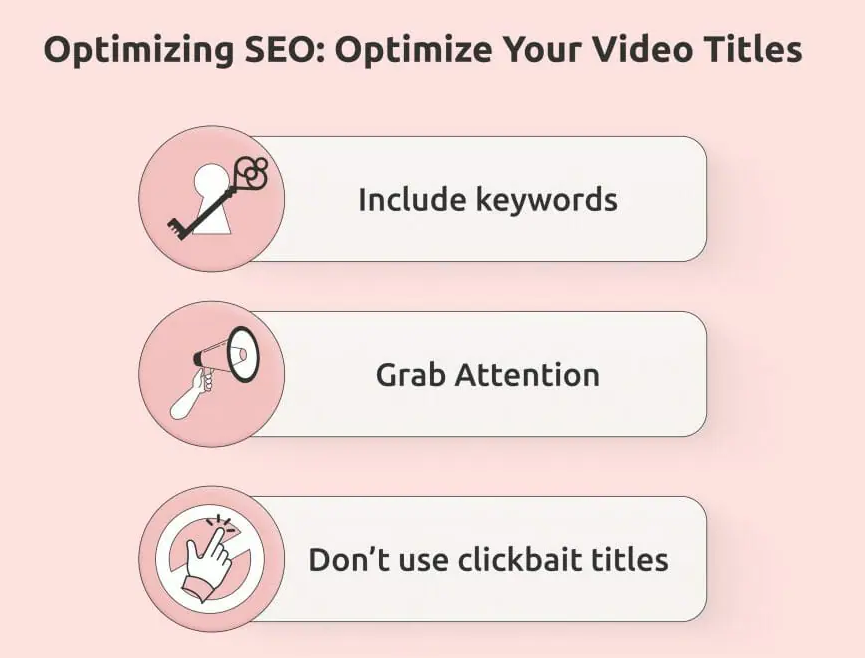
Source: Influencermarketinghub
Descriptions also interact with how results appear. Google notes that key moments in Search can be taken from structured data or from the YouTube description, which makes clear, labeled chapters useful for navigation and discovery. So, not only do transcripts matter for SEO, but also meta titles and descriptions, where you can place your high-performing keywords.
Make the text do real work by following these best practices:
- State the result, then the topic.
- Use search terms your audience prefers.
- Add short, labeled chapters in the description.
- Keep everything accurate and non-clickbait.
Useful copy helps people choose faster and watch longer. That behavior supports visibility far more reliably than tricks. The tangible business metrics that grow along are conversions and revenues.
Add Transcripts and Closed Captions
Closed captions and transcripts are small add-ons with lasting value. They help different types of viewers follow your message, regardless of the setting. That flexibility can improve completion rates and satisfaction.
Users may use transcripts for;
- Improved content comprehension.
- Citing a particular part, phrase, or expression.
- Aid with translation (transcribed text can be copied and pasted into an online translator).
- Memorizing and learning the content.
- Sharing worthy fragments, saving in notes, etc.
Search systems also prefer content they can interpret. Transcripts give them the wording, names, and phrases that define your topic. This makes your page easier to pair with real questions people ask. Again, a win-win situation for search engines and for real users.
Captions, on the other hand, reinforce understanding in fast sections. A quick formula, a step list, or a disclaimer is easier to grasp when it’s on the screen. That reduces rewinds and keeps the pace steady, helping SEO in the short and long run.
Here are some clear benefits of transcribed texts and closed captions in videos:
- Captions improve understanding when audio is hard to hear.
- Transcripts help search connect queries to your video.
- Readers can skim before watching.
- Readers can also take notes from transcripts after watching.
- Sharing transcripts is a common business practice.
- Technical terms are presented cleanly in captions and transcripts.
- Support accessibility without extra effort from viewers.
For maximum output with minimal input (efforts), keep edits light but careful. Remove filler words only if it helps readability, and avoid changing the meaning. In things like closed captions, accuracy matters more than style.
As with many digital aspects in SEO, you don’t have to struggle with captions and transcripts alone. Plenty of modern tools, as of lately AI-powered, can help you speed up the process.
For example, such tools as Sonix, Trint, Otter.ai, and Rev AI, can do most of the transcription work for you, and they will only require your supervision and instructions. Plus, final checks and beautifications, of course.
Use Schema Markup for Video Content
Search engines reward clarity. Schema markup exists to bring that clarity to every website, however, in video context, it is called VideoObject schema.
VideoObject schema provides clarity by listing the facts of your video in a consistent structure. It also tells crawlers what humans already see on your page.
Check the completeness of your schema information, then assess the accuracy. Those two qualities carry most of the benefit for SEO.
Let’s picture an example.
Suppose, in a help center article, you embed “Reset Your Router in Under 2 Minutes.” You add a VideoObject with name, description, uploadDate, duration PT1M50S, thumbnailUrl, and embedUrl. A Clip at 1:10 — “Factory Reset” — gets marked, so search can send users straight there.
Before you hit publish, verify the following schema nuances:
- Labels: the name/description mirrors the page.
- Image: the thumbnail URL is stable and fast.
- Access: robots.txt doesn’t block the file.
- Timecodes: Clips or chapters are precise.
- Consistency: markup, player, and text agree.
It often helps to think of schema as table stakes for video SEO. It doesn’t replace useful content or good playback, but it helps search engines like Google understand (and show!) what you’ve already built.
Place Videos Above the Fold for Visibility
Your video can’t help if people don’t see it. Placing it above the fold removes a step and lets visitors decide quickly. That immediacy helps both engagement and clarity.
Chartbeat’s 2024 whitepaper notes two useful patterns: the most viewed area is above the fold, and clicks cluster just above the digital fold (roughly 400–600px). That’s precisely where a primary video benefits from living.
There’s nuance, too. Time-in-view often peaks slightly lower on the page (around ~1200px), which is a good reminder to support the player with brief context above and substance below. You’re guiding the scroll after earning the first interaction.
Google’s documentation complements this: treat important videos as the main content on a dedicated “watch page” and make sure they’re clearly exposed. If Google can see the player and its metadata, it’s easier to qualify for video features in search results.
Place your videos well with this mini-guide:
- Put the player and a one-line promise up top.
- Keep distractions (popups, big banners) off the first screen.
- Let the next paragraph continue the story below.
- Ensure the play button is obvious on small screens.
- Ensure no heavy elements are pushing your video down.
- Clear, high-contrast thumbnail (impossible to stress this point enough).
When the player appears right away, and it takes microseconds to load, you reduce friction. That small reduction helps more people watch, and more watching is the signal you want. Your user engagement grows, which is a reliable prerequisite for higher conversions.
Above-the-fold placement is about minimizing effort. If the player is visible as the page loads, visitors don’t have to hunt for it. That simple change helps more sessions start with a play.
Ensure Mobile-Friendly Video Playback
On phones, attention is fragile. A player that loads quickly and stays stable wins more views than one packed with fancy effects. Make it easy to press play, understand the topic, and keep watching. This standard recipe for success has been holding true for over a decade.
Connections vary from Wi-Fi to spotty 4G and 5G, depending on the country. Let the video shift quality smoothly without stopping. If the experience feels good on a cheap device, it will feel great on everything else.
However, the majority of people own cheap devices. That’s mostly true for the Middle East, Asia, Africa, and South America — regions where most of the world’s population resides. You don’t want to lose these markets by not optimizing for the entry-level phones.
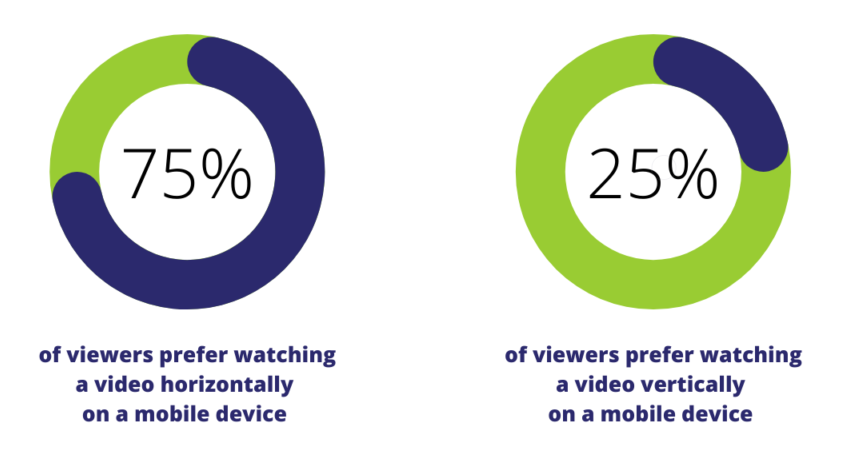
Source: Wisernotify
Also, keep in mind that mobile users are often in motion: commuting, waiting, multitasking. The job of your player is to reduce friction. Clear controls, fast start, and steady layout are worth more than any visual flourish.
Think in terms of comfort. Keep text readable around the player and let users watch with sound off. Good captions and quick scrubbing make it easy to follow along.
These simple rules always help:
- Keep controls large and easy to tap.
- Use adaptive bitrate for changing networks.
- Provide captions for silent viewing.
- Add a poster image instead of heavy preloads.
- Avoid pop-ups that push the player down.
Protect the first seconds. A clean start builds trust, and trust leads to longer viewing. Measure play starts, re-buffering, and exits to see where the mobile journey breaks — and fix what the data shows.
Also, place the player near the answer, not buried under banners. Keep touch targets roomy, so controls are easy to reach on the go. Track play rate and buffering issues to spot where viewers drop, then fix the rough edges.
Conclusion
Does video help SEO? This article has answered this question positively many times over, while the key discourse was around particular ways in which video helps SEO. Here is a short summary of the key benefits:
- Improved engagement signals.
- Higher visibility in search results.
- Stronger backlink profile and better shares.
- Extended keyword opportunities.
- Better user experience.
Despite a thorough overview and a deep dive into each of the above perks, it’s still safe to say that we’ve just scratched the surface of what good video content can do to one’s SEO performance.
Anyone can find their own benefits, depending on the business maturity stage, scale, and personal experiences. One thing remains definitive — video will always improve the way your content is discovered and engaged with online.
Enter URL & See What We Can Do Submit the form to get a detailed report, based on the comprehensive seo analysis.





